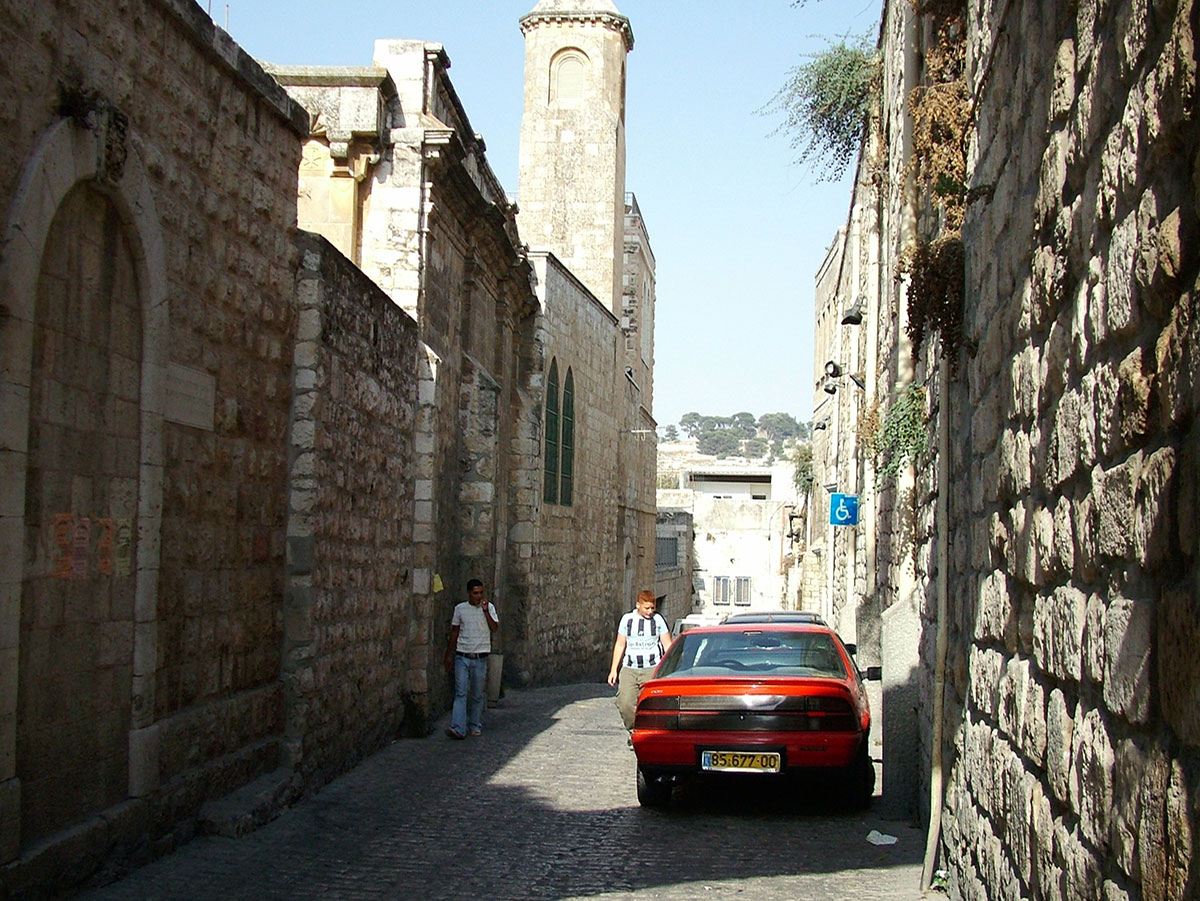Via Dolorosa, the last steps before the crucifixion
Via Dolorosa is one of most important christian site in the Holy Land, visitor can revive there the last moments of Jesus by cross the streets of Jerusalem, from Tower of Antonia to the Golgotha Hill.
The Via Dolorosa can be one of most dramatic pilgrim site in Jerusalem, in certain opportunities you can see group of christians holding crosses to fell how difficult it was to Jesus.
The path includes the Cross Stations.
In deference to Jewish custom, the Romans return His garments. The heavy patibulum of the cross is tied across His shoulders and the procession of the condemned Christ, two thieves and the execution detail of the Roman soldiers, headed by a centurion, begins its slow journey along the Via Dolorosa. In spite of His efforts to walk erect, the weight of the heavy wooden cross together with the shock produced by copious blood loss is too much. He stumbles and falls. The rough wood of the beam gouges into the lacerated skin and muscles of the shoulders. He tries to rise, but human muscles have been pushed beyond their endurance. The centurion, anxious to get on with the crucifixion, selects a stalwart North African onlooker, Simon of Cyrene, to carry the cross. Jesus follows, still bleeding and sweating the cold, clammy sweat of shock. The 650 yard journey from the fortress Antonia to Golgotha is finally completed. The prisoner is again stripped of His clothes - except for a loin cloth which is allowed the Jews.
The Crucifixion - Medical Account, Halifax-Dartmouth Church of Christ p.2
 The early set of seven scenes was usually numbers 2, 3, 4, 6, 7, 11, and 14 from the list below.[9] The standard set from the 17th to 20th centuries has consisted of 14 pictures or sculptures depicting the following scenes:
The early set of seven scenes was usually numbers 2, 3, 4, 6, 7, 11, and 14 from the list below.[9] The standard set from the 17th to 20th centuries has consisted of 14 pictures or sculptures depicting the following scenes:
Jesus is condemned to death
Jesus carries his cross
Jesus falls the first time
Jesus meets his mother
Simon of Cyrene helps Jesus carry the cross
Veronica wipes the face of Jesus
Jesus falls the second time
Jesus meets the women of Jerusalem
Jesus falls the third time
Jesus is stripped of his garments
Crucifixion: Jesus is nailed to the cross
Jesus dies on the cross
Jesus is taken down from the cross (Deposition or Lamentation)
Jesus is laid in the tomb.
Jesus rises from the dead
Out of the fourteen traditional Stations of the Cross, only eight have clear scriptural foundation. Stations 3, 4, 6, 7, and 9 are not specifically attested to in the gospels (in particular, no evidence exists of station 6 ever being known before medieval times) and Station 13 (representing Jesus's body being taken down off the cross and laid in the arms of his mother Mary) seems to embellish the gospels' record, which states that Joseph of Arimathea took Jesus down from the cross and buried him. To provide a version of this devotion more closely aligned with the biblical accounts, Pope John Paul II introduced a new form of devotion, called the Scriptural Way of the Cross on Good Friday 1991. He celebrated that form many times but not exclusively at the Colosseum in Rome. In 2007, Pope Benedict XVI approved this set of stations for meditation and public celebration. They follow this sequence:
Jesus in the Garden of Gethsemane
Jesus is betrayed by Judas and arrested
Jesus is condemned by the Sanhedrin
Jesus is denied by Peter
Jesus is judged by Pilate
Jesus is scourged and crowned with thorns
Jesus takes up his cross
Jesus is helped by Simon of Cyrene to carry his cross
Jesus meets the women of Jerusalem
Jesus is crucified
Jesus promises his kingdom to the repentant thief
Jesus entrusts Mary and John to each other
Jesus dies on the cross
Jesus is laid in the tomb





